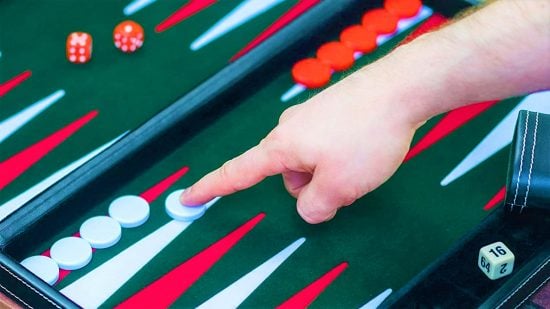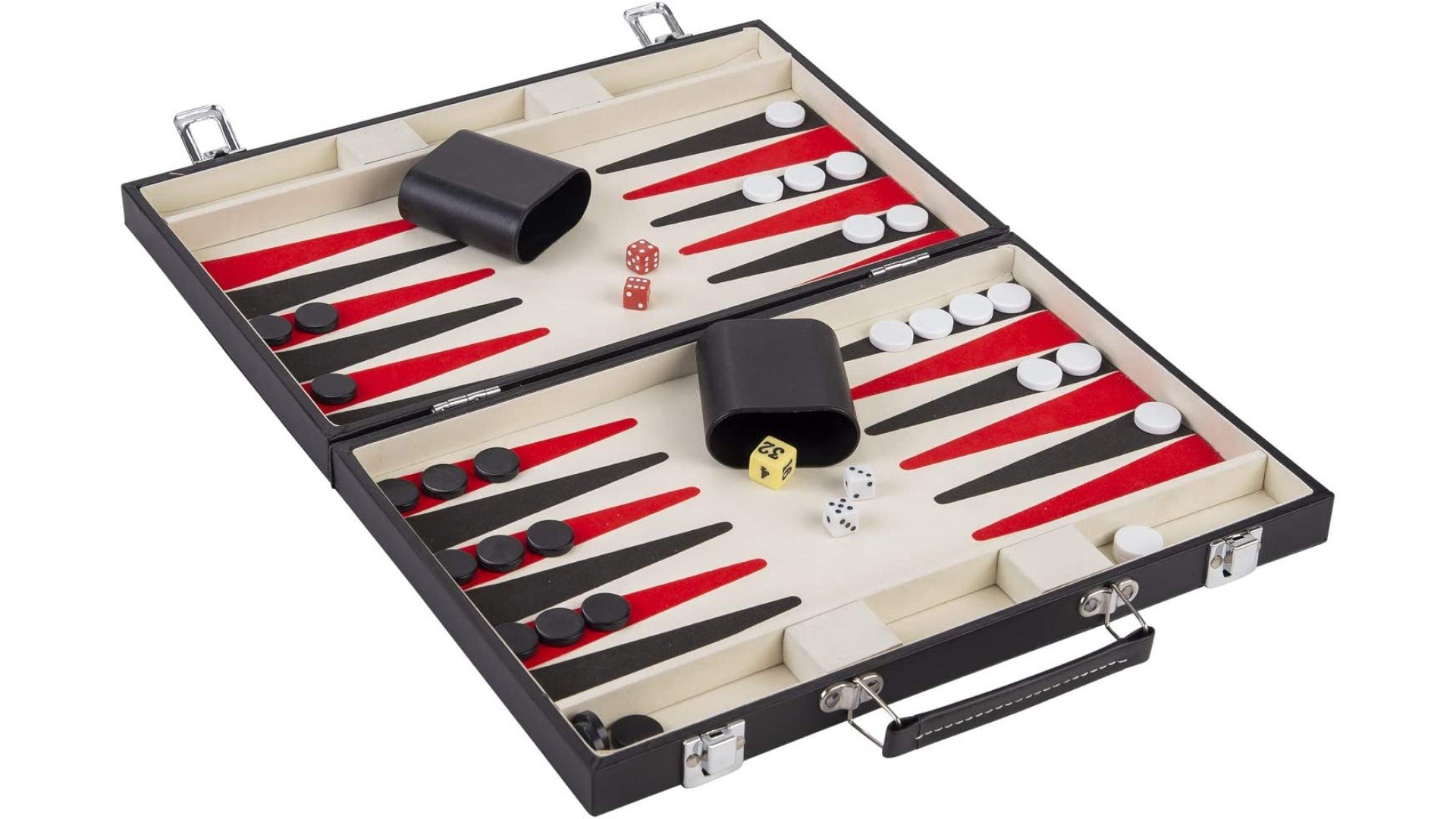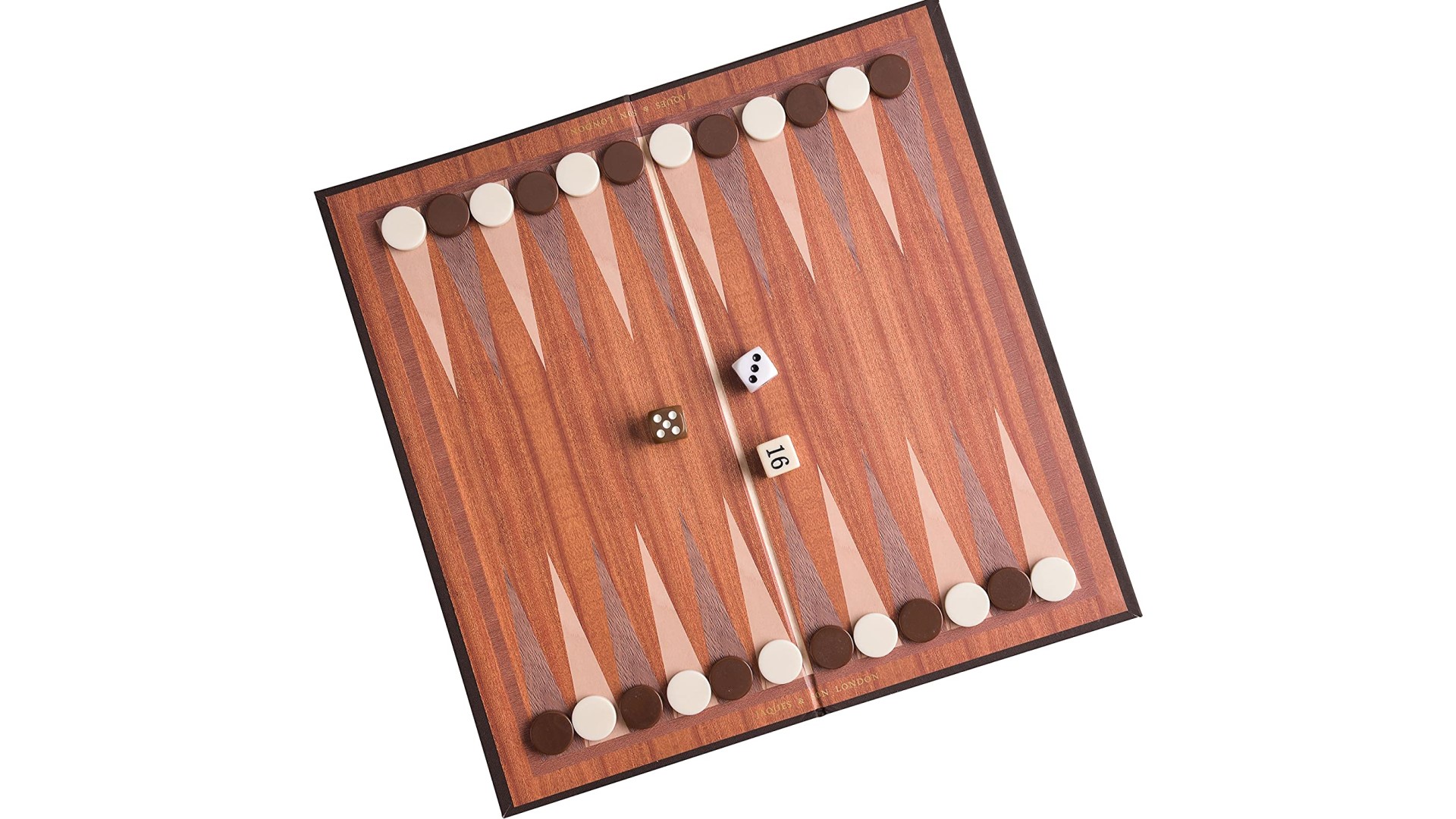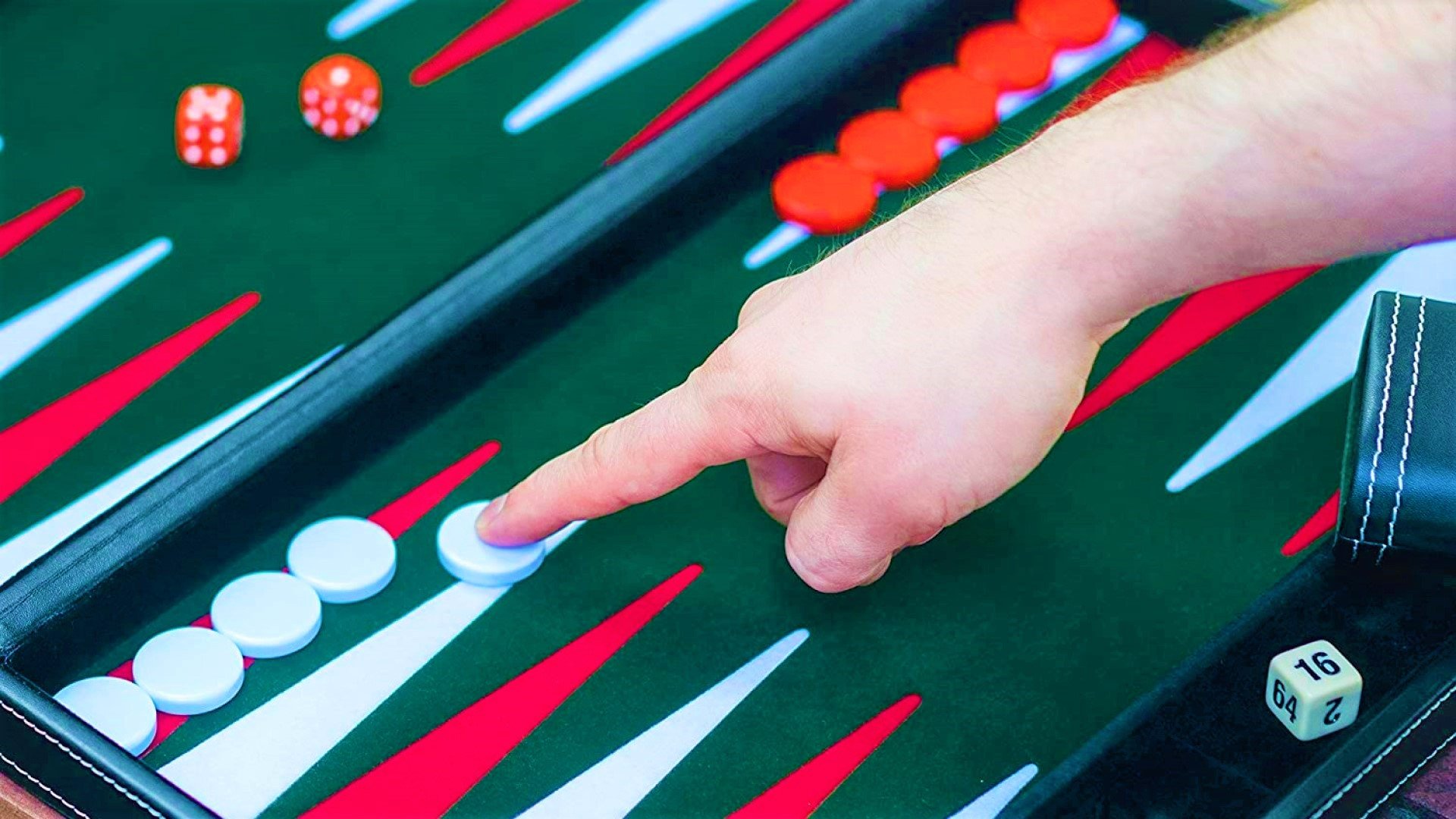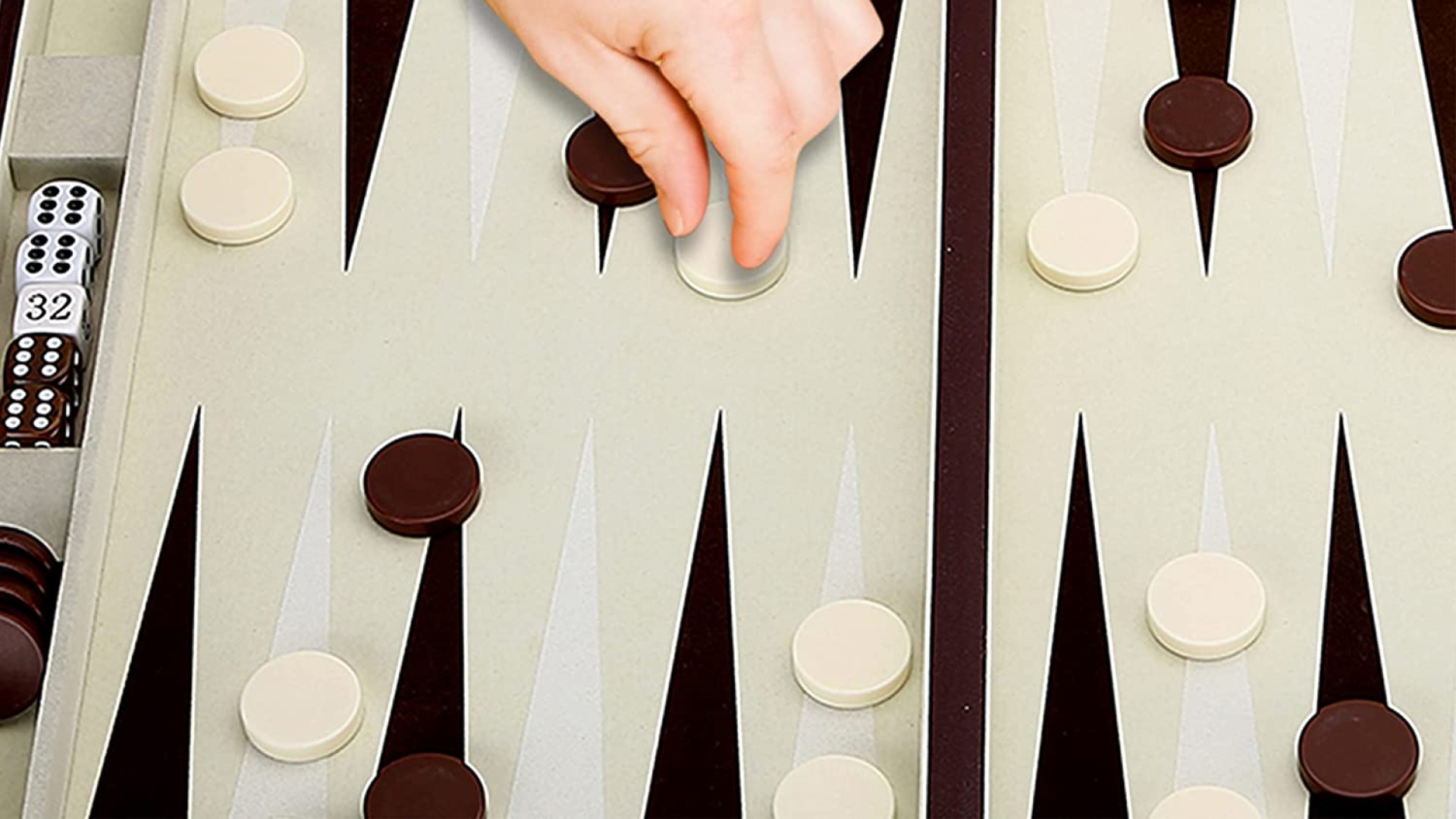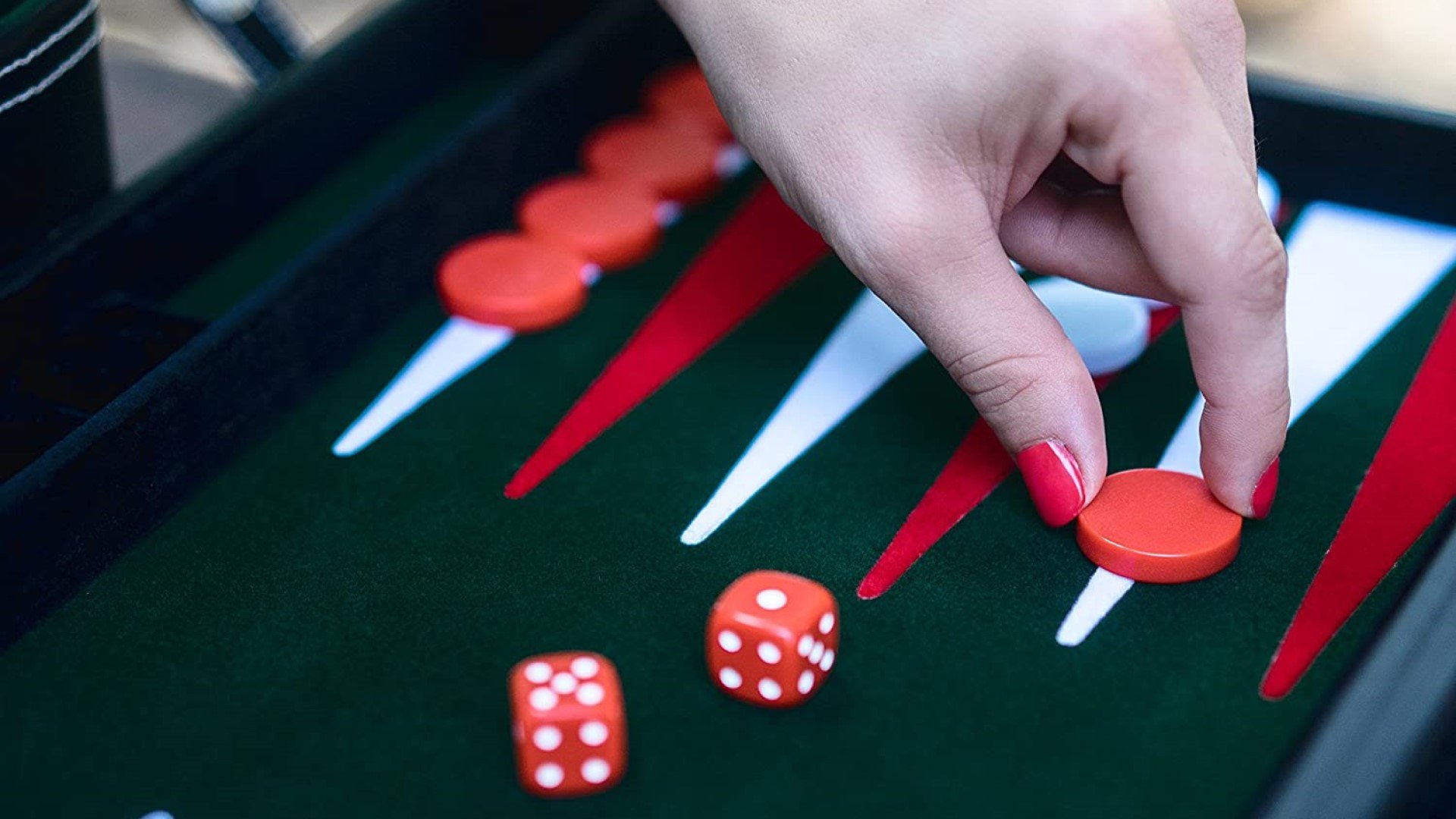It may be one of the oldest board games in the world, but there’s no time like the present to learn how to play Backgammon. Granted, it’s a game that takes a little more time to pick up than its classic contemporaries (looking at you, checkers), and the extra Backgammon rules and terms may seem a little daunting. Heck, some people are intimidated just looking at the unfamiliar triangles painted all over the board.
Once you’ve picked up how to play Backgammon, though, it can be a tense and rewarding strategy board game, filled with luck and betting. After all, games this old tend to stick around for a reason – they’re still one of the best board games to play, whatever your age and board game experience level.
We’ve covered the setup, rules, and ways to win Backgammon. This is a guide designed for new players, as well as anyone who’s looking to refresh their memory. So, break out those folded boards, get your checker pieces down, and get ready to play one of the best classic board games around.
Here’s our guide on how to play Backgammon:
How to set up Backgammon
First, lay out your Backgammon board. This is a wooden board split into two halves, and each half has six long triangles on both sides of the board. These triangles, which are grouped into four ‘quadrants’, are known as ‘points’ or ‘pips’.
There are some other key terms you’ll need to understand how to set up and use your Backgammon board. Two quadrants on the board are known as the ‘outer board’, while the other two quadrants are the home boards for each player. Your home board will be on the side of the board nearest to you, but the board can be set up to have both players’ home board in either their nearest left or right quadrant.
Each half of the board has an outer board and home board quadrant, and between the two halves of the board is the ‘bar’.
Each point has a numerical value between one and 24 assigned to it. Point one is the first triangle on the right of your home board. The numbers ascend as the points travel clockwise around the board, meaning the first point on your opponent’s home board is number 24.
At least, it’s number 24 for you. Your opponent treats their first home board point as number one, so each point actually has two opposing associated numbers.
Now you know your board well, you can start placing your Backgammon pieces. Each player must place two pieces on their 24 point, five on their 13 point, three on their eight point, and five on their six point.
Backgammon rules
Each player rolls a die to start the game. The person who rolled highest gets to move first, but they must use the results of both dice to move their pieces. If both players roll the same number, they must reroll until a winner can be chosen. In future turns, players roll both dice to determine their movement.
There are some other dice-rolling rules you’ll need to follow for the result to be legal:
- Dice must be rolled together, and in a dice cup if possible
- Dice that land cocked don’t count and must be rolled again
- Dice must land on the right of your side of the board
- Dice that land outside of the board or on top of a checker must be rerolled
Each die’s result represents how far you can move two separate pieces along the board’s points. The pieces must move forward, following the points clockwise around the board in ascending numerical order until they reach point 24. You can choose to move two pieces or one piece twice, as long as both points the single checker stops on are legal spaces.
The only legal spaces a piece can stop on are ‘open points’, which are empty or occupied by only one opposing piece. If there is a single opposing piece on a space, this is called a blot, and you can ‘hit’ it by placing your piece there. A piece that has been hit is removed from the board and placed on the board’s bar.
If you have a piece sent to the bar, you must spend your next turn rolling to get your piece back on the board. Roll two dice, and choose one result which corresponds with a point in your opponent’s home quadrant (which, for them, are numbered one to six).
If that point is an open point, you can move your piece there, and the other die result can be used as normal; if you can’t move with either die result, your go is over, and you must try again next time. If you have more than one checker on the bar, you can’t resume normal play until all have re-entered the board.
Rolling a double when moving checkers allows you to play the numbers twice (essentially earning you two extra moves). You can move up to four checkers – but remember, if you move the same checker more than once, it must be able to move to an open point for every die result.
If one die result would take your piece to a point that isn’t open, you only perform the move that does land on an open point. If you can’t use either die result, you miss a turn.
How to win Backgammon
The aim of Backgammon is to move all your pieces into your home board, and then remove each of them from the board. When all your pieces are on your home board, use your turn to roll your dice as usual. If the dice results correspond with a point in your home board that has a piece on it (for example, four and two), these pieces can be removed from the board.
If you don’t have a piece on the number you rolled, you must move a piece that many spaces from a higher point. For example, if you rolled a four and point four was empty, you would need to move a piece from point five or six four spaces forward. If this isn’t possible, you can remove a piece from the next-highest occupied point (so, in this example, you could remove a piece from point three).
If one of your pieces is hit during this process, you need to bring it back to the board before you can continue. Otherwise, the first person to empty their home board wins.
There’s one last die we need to discuss – the doubling cube. There’s no need for the doubling cube in a one-off game of Backgammon, but it’s useful if you want to track points over multiple games, or even bet money on your game.
This is a die with two, four, eight, 16, 32, and 64 on its faces. The doubling cube starts out on the bar, with the 64 facing up (at this stage, it represents the number one). Before their turn, either player can propose to double the stakes of the game.
The opponent loses the game if they refuse the stakes, and they must pay the imaginary point (or real money) to their opponent. For example, if you refuse before any doubling has happened, you’d only pay one point.
If the doubling is accepted, the opponent who accepted the stakes takes the doubling cube and turns the two face up. The points earned by the winner of this game are now doubled, but only this person can propose a second double. Doubling can happen as many times as you both want, but no player can propose doubling twice in a row.
When playing to reach a certain number of points (a number you both decide before starting), you’ll need to know what a ‘gammon’ and ‘backgammon’ are. A gammon is when your opponent failed to bear off any checkers before you won the game – in this instance, they must pay double the current stake in points.
If an opponent didn’t bear off any pieces and they still have at least one checker on the bar or in your home board, you’ve scored a backgammon. In this case, they must lose triple the current stakes on the doubling cube.
